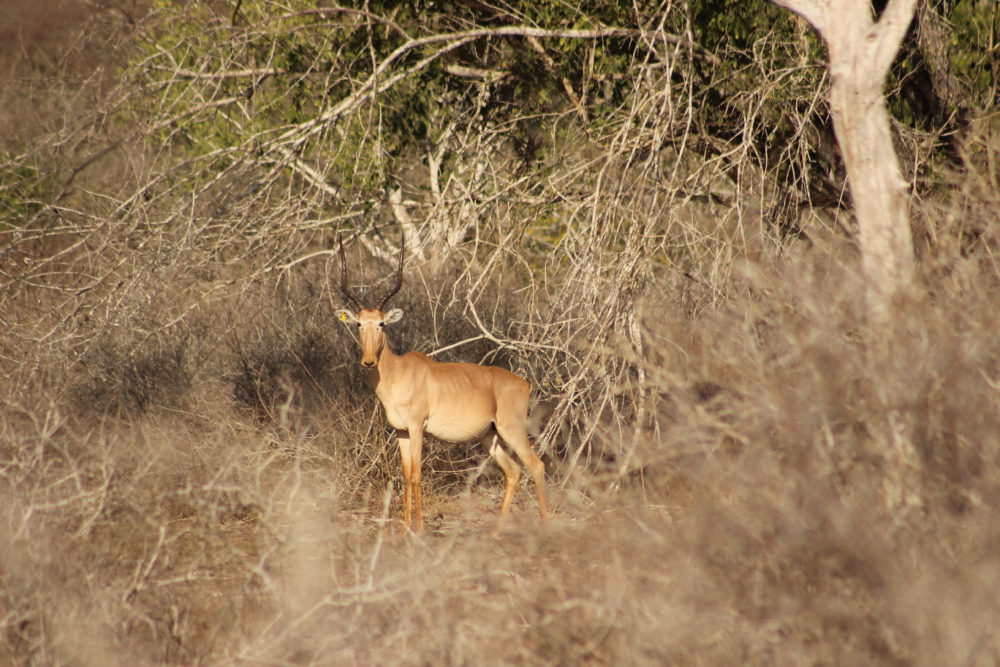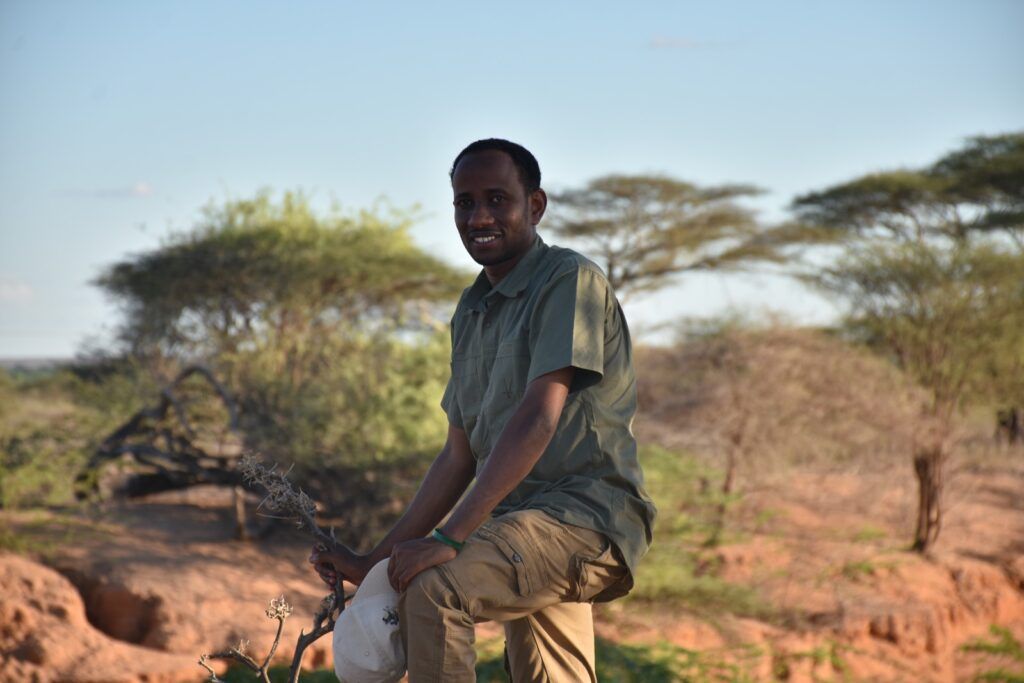Habitat restoration for hirola

Creating sustainable habitat to recover the world's most endangered antelope.
The world’s most endangered antelope
Hirola, considered the world’s most endangered antelope, have suffered a population decline of over 95% in the last four decades, falling from around 15,000 individuals in the 1970s to fewer than 500 today. They are classified as Critically Endangered by the IUCN and listed as one of the top-10 focal species at risk of imminent extinction. Habitat loss and degradation has been identified as the ultimate driver of hirola declines.
Increasing hirola habitat

Long term PTES partner Ali Hussein is leading the efforts to bring hirola back from the brink by restoring the grasslands they need. With the support of PTES Ali has been creating grass restoration islands in four core hirola areas since 2018 and the results are encouraging – with hirola spending ten times more time in these improved grassland patches.
Now Ali is planning to scale up this work to increase available hirola habitat by 20% over the next two years (through clearing invasive trees from 3500 hectares and increasing grass cover by reseeding 2000 hectares with native grasses). This restoration will create a sustainable habitat that supports the recovery of hirola to populations that are numerically viable and ecologically functional, as well as enhancing local livelihoods.
Ali and his team are working closely with local communities to remove invasive trees, reseed native grasses, and establish sustainable grazing practices for livestock. They’re also establishing nature-based enterprises, such as grass seed harvesting and the production of ‘hirola briquettes’, high heat, low emission compact logs produced from the cleared invasive trees. This will not only help the hirola population recover but also improve grassland quality and support local livelihoods.
Help us restore the land for endangered hirola antelope with a donation today.
